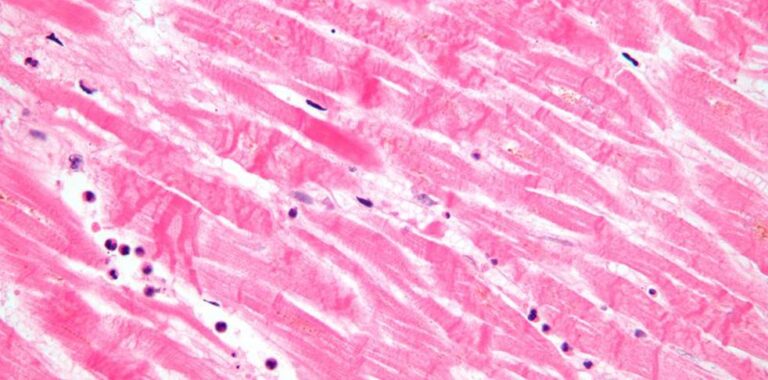Cardiovascular disease causes almosttwo million deathsin Europe every year. Heart attacks are themost common killerworldwide but even those fortunate enough to survive their first heart attack remain at risk.This is because heart attacks leave scars on the heart, turning flexible muscle into rigid fibres that do not expand and contract like normal heart tissue. If the organ is unable to beat properly, it can lead to heart failure.One promising solution currently under investigation is to patch up the scar tissue either with stem cells or adult heart cells. New cells could be placed over the scar tissue, eventually replacing it as the damaged cells die away.A key challenge to making this work is ensuring the newly implanted cells can pass electrical signals to existing heart muscle cells. The heart beats in time with a natural pacemaker that fires electric pulses through the cardiac muscle cells. If heart cells do not conduct this electrical signal, the heart will not rhythmically pump blood around the body.Heart of goldDr Tal Dvir heads up the Laboratory for Tissues Engineering and Regenerative Medicine at Tel Aviv University in Israel where he is building on work he did at the Massachusetts Institute of Technology, US.‘We discovered that cells can transfer electrical signals through gold nanowires that transfer the signal from one cell to another,’ he explained.“‘Cells can transfer electrical signals through gold nanowires.’Dr Tal Dvir, Tel Aviv University, IsraelAs part of the EU-funded NW Cardiac Tissues project, Dr Dvir’s team in Tel Aviv is engineering heart patches composed of cardiac cells and nanocomposite scaffolds from gold nanoparticles and polymers.The goal is to implant these patches with tiny gold particles onto scar tissue in the heart. However, that may still be several years away. The current focus ofDr Dvir’s teamis on working with cells outside the body and then applying what they learn in animal models.They are already seeing promising results in rats. ‘By inducing heart attacks in rats and implanting patches which contain gold nanoparticles we can see how well electrical signals transfer from healthy parts of the heart to the engineered patch,’ he said.The principle of adding gold nanoparticles to cells to improve electrical conductivity could also have implications for implants for spinal cord injuries.‘We are exploring how this technology could be used in neuronal cells,’ Dr Dvir explained. ‘If it can happen in the heart it could work to regenerate the injured spinal cord. Implanting cells that could conduct electrical signals up and down the spinal cord would be exciting.’Rapid repairsThe ability to conduct electrical signals is not the only success factor in repairing cardiac scar tissue. The implanted patches must be able to develop new blood vessels which knit into the existing blood supply. Otherwise, the new cells will not thrive.Researchers at Newcastle University, UK, are studying the cellular proteins that determine whether heart stem cells are capable of promoting angiogenesis – new vessel formation. It was already known that angiogenesis plays a role in successfully repairing scar tissue in the heart but it was not clear how it works. As part of the VASC-GEN project, led by Professor Helen Arthur, Dr Simon Tual-Chalot has been trying to solve the mystery.The role of a protein called endoglin is of interest as it is known to have a role in angiogenesis. In the lab, Dr Tual-Chalot grew some cardiac stem cells that expressed endoglin in a dish and grew others in a dish that had no endoglin. Those that expressed endoglin were able to drive the formation of many more of the tiny tubes required to form new blood vessels.Then the team injected cardiac stem cells expressing endoglin into some mice that had recovered from a heart attack. Mice that were given the endoglin-expressing cells had much better blood vessels in the heart than those that did not. To get a fuller picture of what is happening during the repair process, additional experiments looked at what other proteins are triggered by the presence of endoglin.‘We found that endoglin is essential to the process,’ Dr Tual-Chalot said. ‘By pre-treating cells to express more endoglin or related proteins before they are implanted, we could boost these cells to make them more angiogenic.’Not only could this improve the effectiveness of the patch, it could accelerate the whole process by several weeks. Dr Tual-Chalot explained: ‘Rather than removing cells from the patient and re-implanting them after a few weeks, it may be possible to use cells from a cell bank. We could treat them to maximise their capacity to regenerate the scarred tissue, the patch could be ready for implantation soon after a heart attack.’If you liked this article, please consider sharing it on social media.
This article was originally published in Horizon, the EU Research and Innovation magazine.
Add to favorites:
Share:
Listing Description
Video
Documents
No documents available.
Ask KETMarket to make a contact
Connect with the Listing Owner!
💬 Please log in now to askKETMarket to make a contact. Not a member yet? Sign up for free and start connecting today!
Video
Related Funding and Finance Opportunities
Unlock Exclusive Funding Opportunities!
🔑 Get instant access to tailored funding opportunities that perfectly match your needs. This powerful feature is exclusively available to our premium members—helping you save time, stay ahead of the competition, and secure the right funding faster.
Upgrade to Premium now and never miss an important opportunity again! Already a premium member? Log in here to explore your matches.
Related Innovation Offers
Discover Tailored Innovation Offers!
🚀 Gain access to technology solutions that match your specific needs and interests—carefully selected to support your innovation goals. These offers are exclusively available to our premium members, helping you identify relevant technologies faster and start the right conversations with potential partners.
Upgrade to Premium now and explore your personalized technology matches today! Already a premium member? Log in here to view your tailored offers.
Related Knowledgeable Resources
Discover More with Premium: Related Knowledge Resources
🔒 You’re missing out on expert-curated knowledge specifically matched to this topic. As a Premium member, you gain exclusive access to in-depth articles, guides, and insights that help you make smarter decisions, faster.
Whether you’re preparing a funding proposal, researching a new market, or just need reliable information—our Premium knowledge matches save you hours of research and point you directly to what matters.
Upgrade to Premium now and instantly unlock relevant knowledge tailored to your needs! Already a member? Log in here to view your personalized content.

